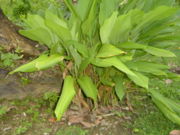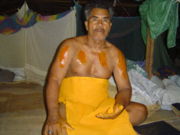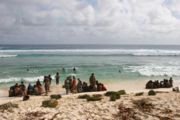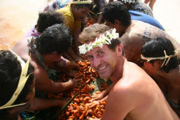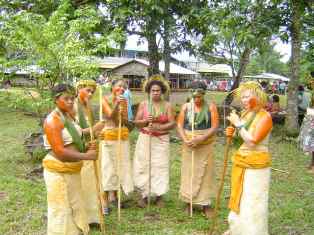How To Make Tumeric Powder
INTRODUCTION
Turmeric is a very important and valuable spice in many societies throughout the world, especially in certain parts of southeast Asia and the southern Pacific islands. This document will focus on how turmeric is grown, how it is processed, and how it is used, particularly by the Tikopia/Anuta society in the Solomon Islands.
PLANTING OF TURMERIC:
Turmeric comes in different types, and it is planted in various parts of the globe so that it delivers its rhizomes for different uses. In the Tikopian society, turmeric demands thorough cultivation in order to yield a good harvest. Usually the planting season runs from August to June. First, the Tikopian people rigorously cultivate the soil and then plant the turmeric plants in rows with estimated spacing. After the planting is done, caring for the plants demands concentrated effort until harvest time. The turmeric plant can be seen as ready when its leaves are dying.
HARVESTING:
The owner of the farm then has to find people to go and perform the harvest. Each person in the society typically plays a role. The most fortunate person is chosen to do the harvesting while the rest pack the turmeric into big baskets and carry them home. Next, the harvesters wash the turmeric on the seashore while singing the Afeuku, which are traditional songs sung in order for the turmeric to be clean. After the turmeric has been cleaned, it is then left soaking in fresh water for a night.
PROCESSING OF TURMERIC:
The next step is to scrape the turmeric using a TETONA, which is traditional piece of equipment made expressly for this purpose. This step will take 4 to 5 hours and is also known as EKUKU. After this has been done, then the turmeric is moved to another location for filtering. The turmeric is first strained with special equipment. The turmeric then needs to be filtered further, and is placed into a TENAFA, which is a very big traditional bowl.
The filtering process is done only by special people known as TUFUNGA – or "experts". TUFUNGA are very important persons during the occasion and are therefore treated especially well. When the TUFUNGA are finished filtering the turmeric, they then leave the turmeric in a TOFUA, which is smaller than a TENAFA, to settle down some more. When the turmeric has had some time to settle, it will then be transferred to a very small and thin bowl known as a TAONGA. It is a traditional bowl that is made purposely for baking turmeric.
After the turmeric is baked to readiness, the oven is opened and the TUFUNGA pour out the baked turmeric into a parcel made from tapa cloths (made from the bark of a special tree). If the TUFUNGA pour out the bowl and find it wet and kind of soft, then the baking was not successful. The turmeric batch has to be rebaked.
After the process of harvesting and processing the turmeric has been successfully completed, there will be a ceremony to mark that the turmeric is very good and the TUFUNGA will be honored as special fellows. They will also receive RAUAI- and will share the turmeric bag with those that contribute.
Making turmeric requires discipline, otherwise one's efforts will be fruitless. If one makes poor turmeric, people will know that that person have made some mistake. Some people say that a person can get bad luck from making poor turmeric.
USES OF TURMERIC
Different cultures have various uses for turmeric. Peoples use turmeric:
-As a dye. Some peoples dye traditional tapa cloths for special male and female garb.
-To welcome people to an island with a special ceremony.
-To celebrate special occasions.
-In traditional dances.
-In cooking. This is the most widespread use. Turmeric is often used to color and give flavor to rice and curry dishes.
This will still be updated with photos when they become available. Furthermore, if any one is looking for the best turmeric please contact me. Back at home the RENGATU (main turmeric plant) can weigh around 10kg. Also if there is any interest in exporting, this is very welcome.
You can also see click here for additional reading.....
